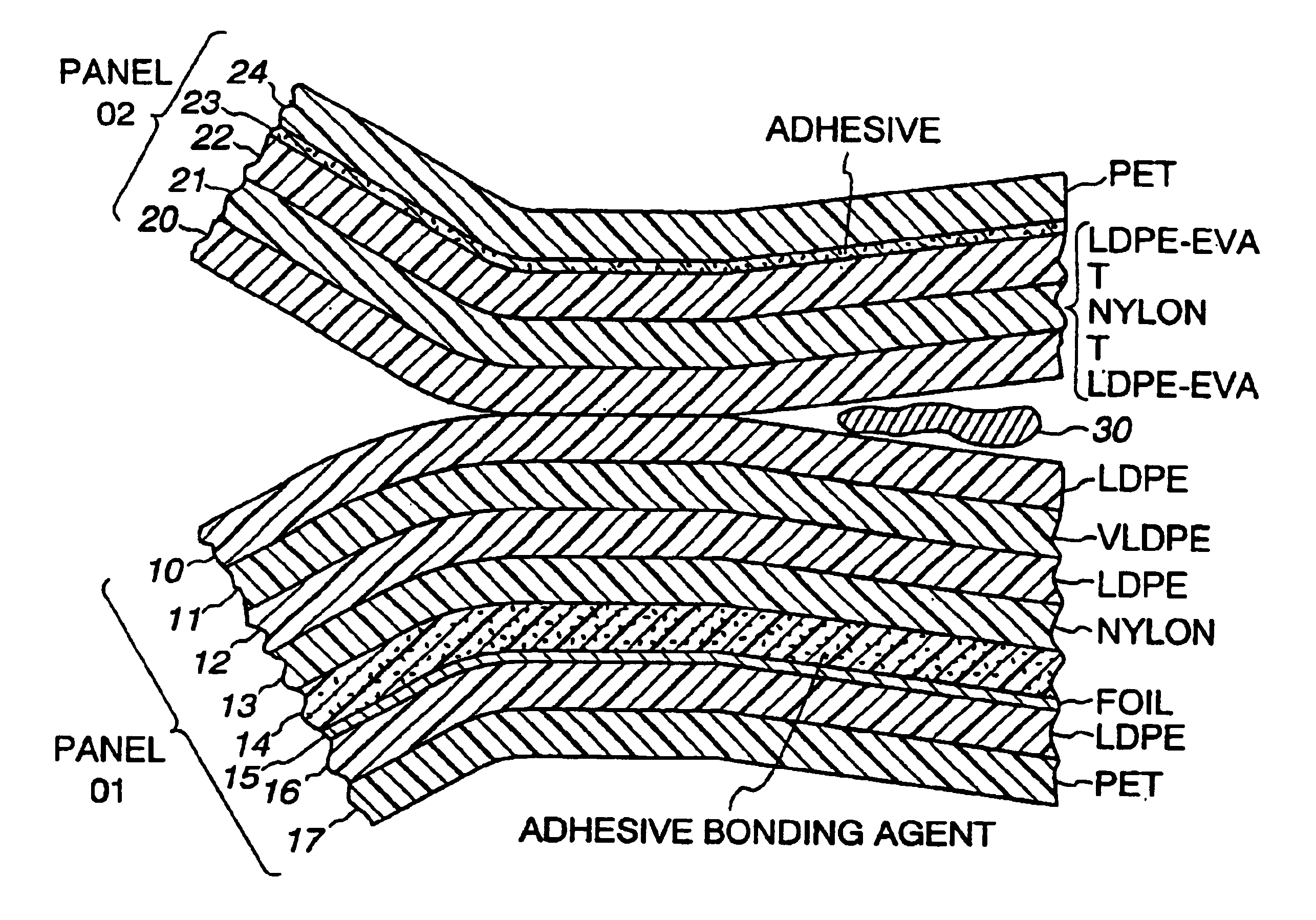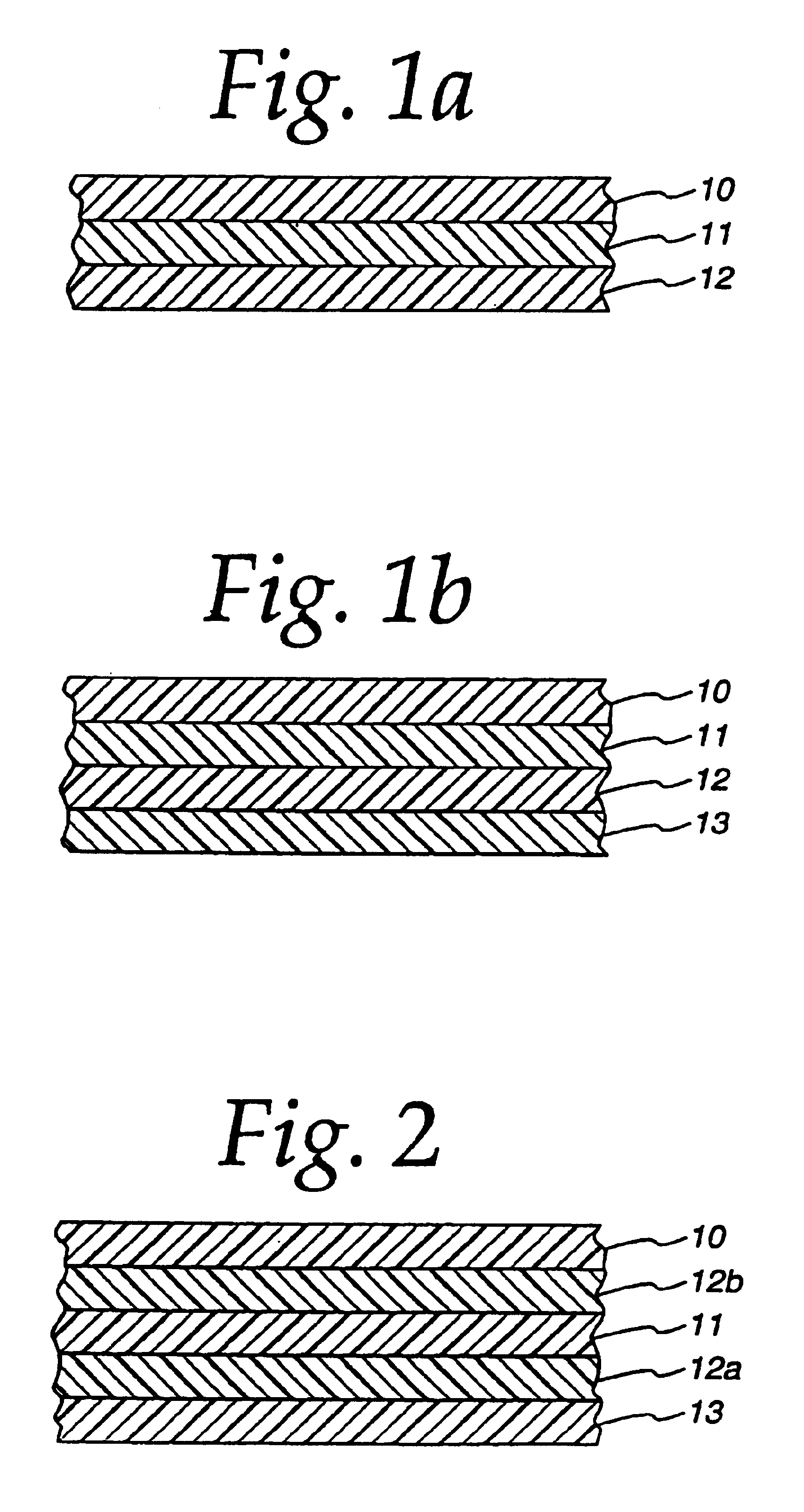Membrane permeable to aromatic products
- Summary
- Abstract
- Description
- Claims
- Application Information
AI Technical Summary
Benefits of technology
Problems solved by technology
Method used
Image
Examples
example 2
[0096]The multilayer structure is produced on a cast line. The first sealable permeable layer of the membrane is formed from hot melting and cast extruding 15 pounds per ream of a low density polyethylene, Quantum NA-206. The second permeable layer is formed from hot melting and cast extruding 35 pounds per ream of very low density polyethylene, such as a FLEXOMER, which is a trade name of Union Carbide. The third permeable layer is formed from hot melting and cast extruding 8 pounds per ream of a low density polyethylene, tie layer blend. 95% NA-206 and 5% PLEXAR TR021.
[0097]The permeable film is cast coextruded with the release layer of 16 pounds per ream of a nylon, Allied 8207, at approximately 440° F. for the low density polyethylene in the first permeable layer and 490° F. for the nylon. The bond between the low density polyethylene in the third permeable layer and the nylon in the release layer is between 25 and 10 g per 25.4 mm.
[0098]A seal is formed between the third permea...
example 3
[0101]The multilayer structure is produced on a cast line. The first sealable permeable layer of the membrane is formed from hot melting and cast extruding 18 pounds per ream of a blend of 65% by weight of a very low density polyethylene, such as FLEXOMER, which is a tradename of Union Carbide, and 35% by weight of a low density polyethylene, Quantum NA-206. The second permeable layer is formed from hot melting and cast extruding 8 pounds per ream of a low density polyethylene, Quantum NA-206. The third permeable layer is formed from hot melting and cast extruding 30 pounds per ream of a blend of 73% by weight of a very low density polyethylene, such as Flexomer which is a trademark of Union Carbide and 27% by weight of a low density polyethylene, Quantum NA-206. The fourth permeable layer is formed from hot melting and cast extruding 8 pounds per ream of a low density polyethylene, Quantum NA-206.
[0102]The permeable film is cast coextruded with the release layer of 16 pounds per re...
PUM
| Property | Measurement | Unit |
|---|---|---|
| Force | aaaaa | aaaaa |
Abstract
Description
Claims
Application Information
 Login to View More
Login to View More - R&D
- Intellectual Property
- Life Sciences
- Materials
- Tech Scout
- Unparalleled Data Quality
- Higher Quality Content
- 60% Fewer Hallucinations
Browse by: Latest US Patents, China's latest patents, Technical Efficacy Thesaurus, Application Domain, Technology Topic, Popular Technical Reports.
© 2025 PatSnap. All rights reserved.Legal|Privacy policy|Modern Slavery Act Transparency Statement|Sitemap|About US| Contact US: help@patsnap.com



